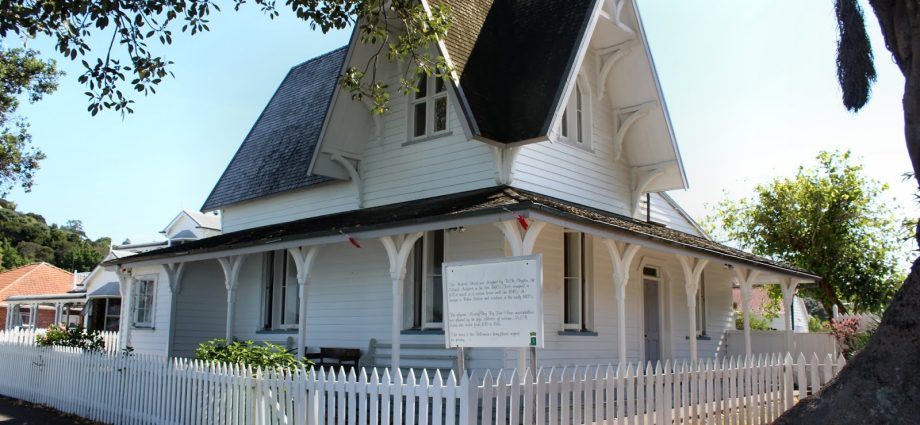PHOTO: Custom House. BACK ROADS
Residents of Russell are rallying together to save one of New Zealand’s most historic buildings, the old Custom House, from further deterioration. The Custom House, built on the waterfront in 1870 during Russell’s bustling port era, has significant historical value. However, since the port’s decline in the 1890s and subsequent sale to the police, who used it as a police station until 2010 and as a constable’s residence until last year, the building has suffered from neglect.
Years of leaking have caused toxic mold, turning the building into a health hazard. Recognizing the urgency, the Kororāreka Historic Building Charitable Trust aims to lease the old Custom House and commence repairs before it becomes irreparable.
Preservation Efforts and Challenges
John Maxwell, Chairman of the Trust, emphasizes the importance of preserving this Category 1 historic building, the highest heritage status in New Zealand. The police no longer want the building, leaving it in limbo while it undergoes the lengthy Crown property disposal process. Maxwell expresses frustration over the prolonged lack of maintenance and warns that continued neglect could result in a significant loss of heritage.
Consulting architect Bruce Mitchinson reports that a condition report, maintenance plan, and conservation plan prepared last year indicate that repairs and weatherproofing would cost around $300,000. The primary issue lies with the shingle roof on the rear “lean-to” section of the building. Temporary measures such as polythene sheets have been used to mitigate leaks, but the building remains vulnerable to damp air and mold.
Mitchinson stresses the urgency of addressing the building’s condition to prevent further deterioration. “It’s annoying, really, that for very little effort and cost, the building can’t be maintained. Last year, it was $300,000 to fix; who knows what it might be at the end of this year?” he remarked.
A Vision for the Future
Maxwell is optimistic about raising the necessary funds for repairs but highlights the need for a lease to proceed. He hopes for government support to expedite the process. The Trust envisions transforming the Custom House into a community hub with shared office space, a conference room, and a display on the building’s history. Additionally, they propose converting one of the outbuildings into a café, capitalizing on the property’s historical significance and scenic location.
The Custom House also includes Russell’s original jailhouse and a Moreton Bay fig tree planted by the town’s first customs officer. Maxwell underscores the importance of preserving this unique part of Russell’s waterfront heritage, expressing that losing the building would be a significant blow to the community and beyond.
Historical Significance and Community Involvement
Heritage New Zealand’s Bill Edwards describes the Custom House as being in a “state of flux” and emphasizes the importance of human presence for the building’s long-term health. He notes that Heritage New Zealand owns the nearby Pompallier House but has not considered taking on the Custom House.
Bruce Mitchinson, left, and John Maxwell of the Kororāreka Historic Building Trust. Photo: Peter de Graaf
The Custom House, designed in the Victorian Gothic style by government architect William Clayton, holds national significance. Edwards underscores the need for the building to be maintained and conserved to ensure it remains in the best possible condition for future generations.
Superintendent Matt Srhoj, head of Northland police, confirms that the police are managing the disposal of the Custom House, engaging with hapū Ngāti Manu, Patukeha, and Ngāti Kuta. He assures that the disposal process will not impact police services in the Russell area.
Deb Rewiri, chair of Kororāreka Marae, asserts that the responsibility for preserving the Custom House lies with the Crown and the police. She emphasizes the building’s significance and warns against letting it reach a point of no return, highlighting the Crown’s duty in the redress process.
Russell’s historic Custom House as seen from the back. The worst of the leaks are in the roof of the “lean-to” extending from the rear of the building. Photo: Peter de Graaf
In conclusion, the Russell community’s efforts to save the historic Custom House reflect their commitment to preserving their heritage. The Kororāreka Historic Building Charitable Trust’s proactive stance and vision for the building’s future underscore the importance of timely intervention and support to ensure this piece of New Zealand’s history remains intact for future generations.
SOURCE: RNZ
















